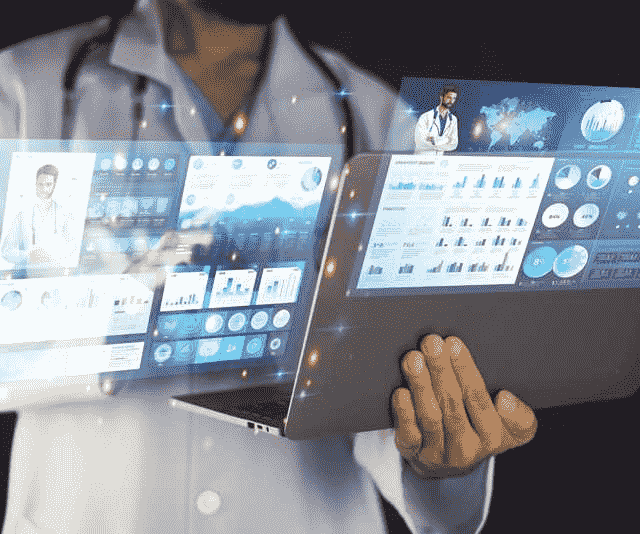Patient management software (PMS) has become an increasingly vital tool for healthcare providers in streamlining clinical workflows. In today’s fast-paced healthcare environment, providers face numerous challenges. These include managing patient information, scheduling appointments, and ensuring accurate billing and reimbursement.
PMS can assist with these tasks by automating routine administrative processes and providing real-time access to patient data. It can help healthcare providers improve efficiency, reduce errors, and enhance patient care.
In this blog, we will explore the role of PMS in streamlining clinical workflows. We will also examine the benefits and challenges of implementing this technology in healthcare settings. Then, we will also look at some of the key features of PMS and consider how it can enhance the patient experience while improving clinical outcomes.
Let’s begin!
What is Patient Management Software?
Patient Management Software (PMS) is a digital system that centralizes and organizes patient information. It also automates administrative tasks and facilitates communication among healthcare providers.
It streamlines clinical workflows by providing a comprehensive electronic health record system. PMS enables appointment scheduling, prescription management, and data integration with other healthcare systems. PMS enhances patient care, improves operational efficiency, and supports better healthcare outcomes.
Role Of Patient Management Software in Streamlining Clinical Workflows
Patient Management Software (PMS) plays a crucial role in improving healthcare workflows. Healthcare providers face challenges in managing administrative tasks and delivering efficient patient care.
PMS automates routine processes and consolidates patient information. It also enables smooth communication among healthcare professionals. Using PMS helps providers increase efficiency, reduce errors, and enhance patient care quality.
Some of the roles are discussed below:
Streamlining Administrative Tasks
The role of Patient Management Software (PMS) in streamlining administrative tasks is crucial for healthcare providers. Administrative tasks in healthcare can be time-consuming and resource-intensive. They often involve manual processes and paperwork. PMS helps automate these tasks. It reduces the administrative burden on healthcare staff and allows them to focus more on patient care.
PMS can automate various administrative processes. These tasks include appointment scheduling, patient registration, billing, and insurance claims processing. Instead of relying on manual entry or paper-based systems, the patient management system enables digital workflows that are faster, more accurate, and less prone to errors. For example, patients can schedule appointments online, reducing the need for phone calls and paperwork. PMS can also integrate with billing systems, automatically generating invoices.
PMS improves efficiency and productivity within healthcare organizations. Staff members can spend less time on paperwork and more time on patient care. It ultimately leads to better patient experiences and outcomes.
In addition, PMS often provides centralized databases for storing and managing patient information. It eliminates the need for multiple paper files, making it easier for healthcare providers to access and update patient records. Centralized information enhances coordination among departments and healthcare professionals, enabling seamless communication and collaboration.
Enhancing Communication and Collaboration
The role of Patient Management Software (PMS) in enhancing communication and collaboration among healthcare professionals is essential for delivering coordinated and efficient care.
PMS often includes secure messaging platforms or communication modules that enable healthcare providers to exchange information in real-time. These platforms allow clinicians, nurses, and other care team members to communicate directly with each other, regardless of their physical locations. They can share patient information, lab results, medical imaging, and treatment plans quickly and securely.
By facilitating real-time communication, PMS eliminates the delays and inefficiencies associated with traditional communication methods such as phone calls, pagers, or fax machines. Healthcare professionals can instantly relay important information, ask questions, seek clarification, or discuss patient cases, leading to improved collaboration and decision-making.
Optimizing Electronic Health Records (EHRs)
Patient management software integrates electronic health records (EHRs) into a unified platform, ensuring accessibility and accuracy of patient information. It enables healthcare providers to efficiently retrieve patient records, update medical histories, and review test results. It saves time, reduces errors, and enhances the overall quality of care.
Empowering Data-Driven Decision-Making
PMS provides healthcare providers with robust analytical tools and reporting capabilities, enabling them to extract valuable insights from patient data. By analyzing trends, identifying patterns, and monitoring patient outcomes, clinicians can make informed decisions, personalize treatments, and implement evidence-based practices for improved patient care.
Improving Patient Engagement and Satisfaction
Patient management software offers patient portals, enabling individuals to access their health records, schedule appointments, and communicate with their healthcare providers. It enhances patient engagement, encourages active participation in care decisions, and ultimately increases patient satisfaction.
How to Choose the Right Software for Your Workflow
Choosing the right software for your workflow involves several important considerations.
Here are some steps to help you make an informed decision:
-
Identify your workflow needs:
Clearly define your workflow requirements and objectives. Determine the specific tasks, processes, and challenges the software needs to address. Consider team collaboration, automation, data management, and integration with existing systems.
-
Conduct a comprehensive assessment
: Evaluate your current workflow and identify pain points and areas for improvement. Engage with your team members to gather their input and understand their needs. This assessment will provide valuable insights into the features and capabilities required in the software.
-
Research available software options:
Explore the market for software solutions that align with your workflow needs. Look for reputable vendors or providers with a track record of delivering quality products and excellent customer support. Review reviews, compare features, and consider scalability, customization options, security, and ease of use.
-
Prioritize key features:
Based on your assessment and research, create a list of must-have features and functionalities for the software. Rank them in order of importance to guide your decision-making process. Consider user interface, reporting capabilities, mobility, and compatibility with your existing infrastructure.
-
Consider scalability and future needs:
Anticipate your future growth and changing requirements. Choose software that can scale with your organization and accommodate evolving workflows. Moreover, flexibility and the ability to integrate with other systems or software in the future are crucial factors to consider.
-
Request demos and trials:
Request demos or trials from shortlisted software providers. This hands-on experience will allow you to assess the software’s usability, performance, and compatibility with your workflow. Involve key stakeholders and end-users in the evaluation process to gather their feedback.
-
Evaluate costs and support:
Consider the software’s pricing structure, including upfront costs, licensing fees, and ongoing maintenance expenses. Assess the vendor’s level of customer support, such as training, technical assistance, and software updates.
-
Make an informed decision:
Based on the evaluation and feedback, weigh the pros and cons of each software option. Consider the alignment with your workflow needs, overall value, and long-term benefits. Consult with relevant stakeholders, such as IT personnel and department heads, to ensure consensus and buy-in.
Final Thoughts
In the rapidly evolving landscape of healthcare, patient management software (PMS) has emerged as a game-changer, revolutionizing clinical workflows and transforming how healthcare is delivered. Moreover, by automating administrative tasks, facilitating communication and collaboration, optimizing electronic health records (EHRs), enabling data-driven decision-making, and improving patient engagement, PMS has become pivotal for healthcare organizations.
With PMS, healthcare providers can now redirect their focus toward patient care, significantly enhancing operational efficiency and ultimately delivering superior patient outcomes. As the healthcare industry continues to evolve, patient management software will continue to play a vital role in shaping the future of healthcare.
Additionally, take a step towards enhancing your healthcare organization’s efficiency and patient care. Explore the power of patient management software and embrace the future of healthcare today.
Discover the potential of patient management software and transform your healthcare organization. Schedule a demo or get in touch with our experts to learn more. Together, let’s shape a healthier future.




